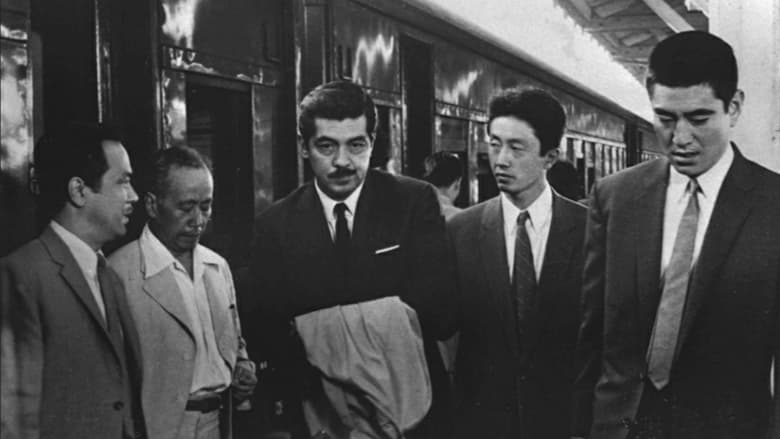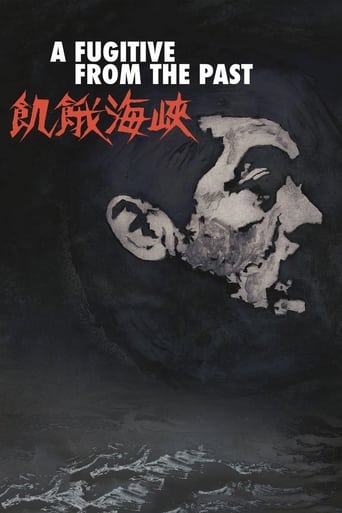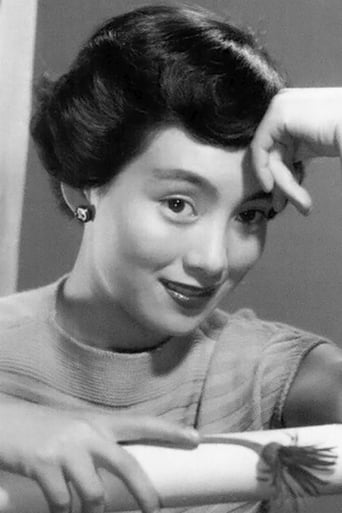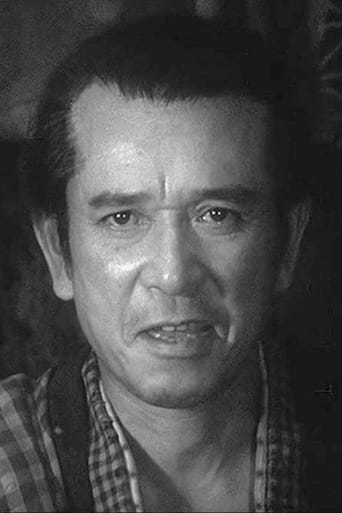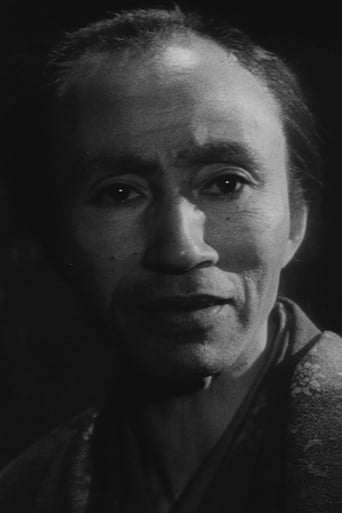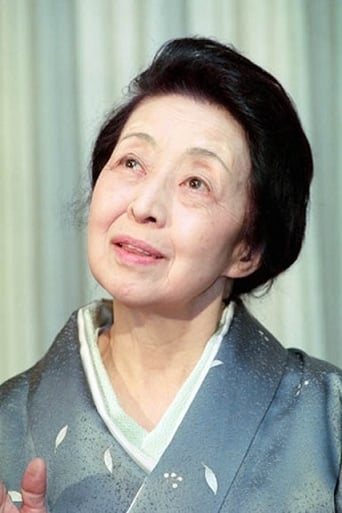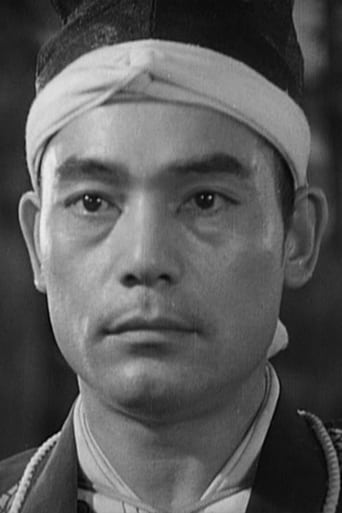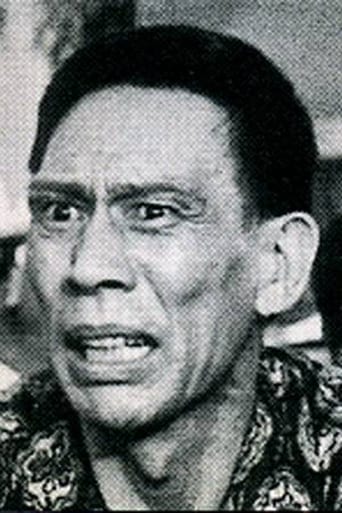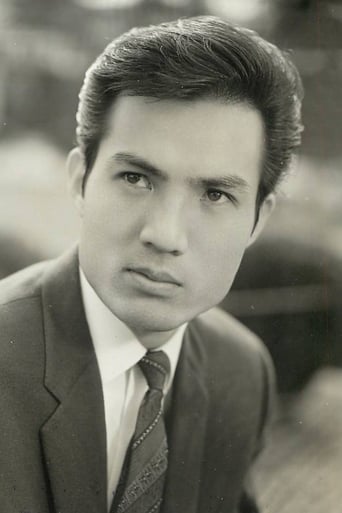Three robbers escape with loot from a heist before one of them kills the others. Their corpses wash up near the aftermath of a maritime calamity, provoking a policeman's interest.
Reviews
Yawn. Poorly Filmed Snooze Fest.
hyped garbage
A lot of perfectly good film show their cards early, establish a unique premise and let the audience explore a topic at a leisurely pace, without much in terms of surprise. this film is not one of those films.
This is one of the best movies I’ve seen in a very long time. You have to go and see this on the big screen.
A Fugitive from the Past (alt. Hunger Straits or Straits of Hunger) is a 1965 allegorical police procedural mystery drama based on Tsutomu Minakami's novel, directed by Tomu Uchida, who's sometimes seen as a Japanese New Wave figure but that's really impossible to determine because the movement never officially existed. This movie is usually hailed as his magnum opus.AFftP begins with a recap of a 1940s maritime disaster and proceeds to follow three robbers for a bit. After the opening, the date and location constantly shift forward as the film starts to focus on a wide array of characters, one by one. It's unofficially divided into three acts, the first of which is a mystery tale ft. the robber, the prostitute and the detective, the second act, which follows the prostitute's life story from there on, and the third, where the cops slowly start to break the robber's mask down.The movie is not only a subtly satirical overview on the Japanese post- war society, but is also laced with Buddhist messages. It's very hard to understand the intent of the makers without some context, but the story apparently follows the protagonist's karma, which certainly makes for an unique character study. Some scenes are seen through negative film - I suppose that those are intended to be particularly important but I don't know why. The other two interesting visual approaches are the usage of a grey filter during the detective's crime reconstruction scenes that take place in his head, and the overwhelming usage of blowing fans which are somehow positioned in almost every frame from the third act.AFftP is sometimes compared to Kurosawa's High and Low, both being crime procedural films. One thing Uchida does better is providing interesting characters; the cast in his film is MUCH more interesting than in Kurosawa's film. Rentaro Mikuni, the most underrated Japanese actor ever, gives a fascinating lead performance; his character is unpredictable and mysterious as he should be. Sachiko Hidari (wife of New Wave director Susumu Hani) is very lovely as the somewhat childish prostitute and the second act, which centers around her, is definitely the best. Special mention to Jonzaburo Ban and Ken Takakura as the two cops which shine in the third act.One thing that Kurosawa does better is presenting the actual investigation aspect. In HaL, the audience is just as clueless as the characters and therefore the investigation is more interesting to follow. In AFftP, Uchida shows us many scenes revolving around the robber before the cops start investigating. The third act sometimes gets really tedious because the cops take forever to realize that which the audience knows and some of their remarks are really stupid. Like in the scene where two corpses with strangle marks are found in the water, with a rock tied to them, and some jackass suggests that maybe it was a double suicide. All that, combined with the unnecessary long runtime (3 hours, without an intermission), make the movie weaker than it should've been. Uchida takes his time telling the plot and the pace is constantly slow, but I'm not sure whether or not this tactic really works because it renders most of the film forgettable, even though it keeps the viewer interested while it's going on.A Fugitive from the Past is definitely worth a watch for anyone interested in the Japanese New Wave, but don't expect to get much out of it unless you are an expert on Buddhism. The point of the movie seems out of the reach, but it's a satisfying mystery film overall.
We're beating a dead horse if we begin to lament another lost treasure, another overlooked Japanese director who's yet to receive his dues. Uchida will have to queue up in a humongous line. The film canon, as we know it, as it's being taught to college kids in film classes, is written from a Western perspective and is so incomplete as to be near useless. It's safe to say we're living in the Dark Ages of cinema, in the negative time of ignorance, and that 100 years from now Straits of Hunger will feature prominently in lists of the epochal narrative films of the previous century. We may choose to keep honoring the Colombuses and pretend we invented paper or gunpowder, but film history will invariably reveal the pioneers.But that's a matter of concern for the historian, the librarian of cinema who will undertake the thankless task of restoring in the ledgers some measure of order. What do we get from the discovery of such a film now, as mortals with a remote? On one hand it's the perfect illustration of a narrative cinema en route to modernism, from Kurosawa to Imamura, how it's concurrent with New Wave expression, aware of it but not ready for it. The illustration is transparent when the image turns negative in crucial scenes, it feels like we're standing on a brink of expression (one of many in this film).This is mere technicality though, dry academic discourse. If we're so inclined, we can find measures of this in Uchida's previous films. The man was of Mizoguchi's generation but he had an eye for abstraction. We can play back to back the finale of Killing in Yoshiwara and Sword of Doom and see what we get, how the point of view shifts to within, how the external turmoil becomes a lucid image of a state of mind.What really matters to me here though is, as Donald Richie describes it, the "working out of karma". It's become a tortured term over the years but we need to understand what karma is not. It's not fate, though it speaks of fatalism. It doesn't emanate from above, we are the agents. Translated from sanskrit (or pali) it means "action". Our past actions have brought us here, our present actions determine our future. Good or bad, karma sets in motion the cycle of suffering that binds all beings to this earthly prison.This is a spiritual film then, but how does it pertain to some primal principle of the soul? The story of bad karma is common in Japanese lore, a man finds himself haunted by guilt demons of the mind for the misdeeds of the past. Usually in this type of film we're brought to the brink of an abyss, from there we can gaze below to the existential void. Most films daren't go further (that is, if we accept there is somewhere to go from there) but it's enough for me to experience this, it's a first awareness. Our reward is that view.Straits of Hunger presents a complexity that opens up a yawning chasm when we come to stand at that brink.Our man is unaware of wrongdoing until it's too late. Because no one would believe his story of how he didn't murder anyone to get ahold of so much money, he keeps it. The dawn of his bad karma comes from a punishing moral conundrum, from circumstances outside his control. Our protagonist gets to choose, a life in prison or a life of guilt. I like that we're watching the hapless fallguy dance to the cosmic tune of an indifferent god (more precisely, no god), but we should keep in mind this is not a noir text.What's of essence here, is the acceptance of suffering. Our protagonist needs to atone for something he didn't want to be born into, a murderous scheme with two ex-convicts of which he was unaware. As we all do. Suffering then, like the first cry of the newborn, is a natural, inate, response to existence. Brilliant! I love how Uchida makes cinema out of that bad karma.In a similar text, the Daibosatsu Toge, famously adapted by Kihachi Okamoto in '66 and Uchida himself in '71, the setting of the visitation is, of course, The Great Boddhisatva Pass (that is, from where the boddhisatvas pass or cross into this world, enlightened beings who choose to remain in the cycle of life and suffering to assist others in their path). Here it's a furious storm, a cataclysm.For the first apparition of guilt, Uchida summons into the stage the portents of doom, rain and lightnings rolling down Mt. Fear, and a prostitute, the harbringer almost ceremonially covered in a blanket, mockingly bellows "there's no path out of hell". In a later scene he repeats the setup, to make a connection, but this time there is murder. What exists in the mind, will find its way out.Inbetween, Uchida gives us one of the most vivid chronicles of life in postwar Japan to this day. The poverty and moral desperation of life in the slums and the black market, the Yankee resentment and political upheaval, but also a kind of hopeful anticipation for change. The contrast is subtle, and in the next segment we see our raggedy protagonist is now a successful businessman.Two instances in the film fascinate me a lot, when the cop recites the sutra for the dead. The first time is nondescript, but when we hear it again in the finale we know. It foreshadows. And more, the cop knows the sutras better than a monk (as a monk tells him), the teachings, but he's not liberated. Ultimately no one is in the film, and the cycle of suffering goes on. This is one of the great Buddhist films for me.
This film is long, predictable, and boring. There is no suspense, the plot is stale, and the police procedure is completely uninteresting. The acting and cinematography are good, but there are some primitive effects whose strangeness is sort of unsettling as intended, but have mostly a comic effect for modern Western viewers (the sex scene with a fingernail is perhaps the highlight of the film). As in most Japanese movies, the characters are ridiculously awkward at times, but apparently this is how Japanese behave in reality.While the depiction of post-war Japan was interesting, it wasn't enlightening, and as with German accounts of WWII you get the feeling that what little suffering is depicted is exaggerated.Fans of Japanese cinema might like this film, but I recommend you watch Pitfall (again) if you are short on time, because Kiga kaikyo won't be adding much to your life.
Perhaps "Kiga kaikyo" (Tomu Uchida, 1963), also known as "Fugitive from the Past" or "Strait of Hunger" (the original japanese title), is the most underrated japanese film in western audience. It's incredible to find that it has only 5 votes on IMDb (including mine)."Strait of Hunger" is a dark, twisted crime drama, yet remains subtle emotion and social criticism themes inside. The characters are complex and intriguing, and the view angle of 1950s Japanese society is wide and enlightened with an epical story telling. The black and white cinematography is astoundingly fabulous, especially the billowy ocean under the hurricane, which gives the audience indelible impression. Tomu Uchida is one of the greatest film makers (if not the greatest) living in Japan and this film is a timeless masterpiece. It is my all time #1 japanese film and I strongly recommend this to everyone.
Top Streaming Movies











